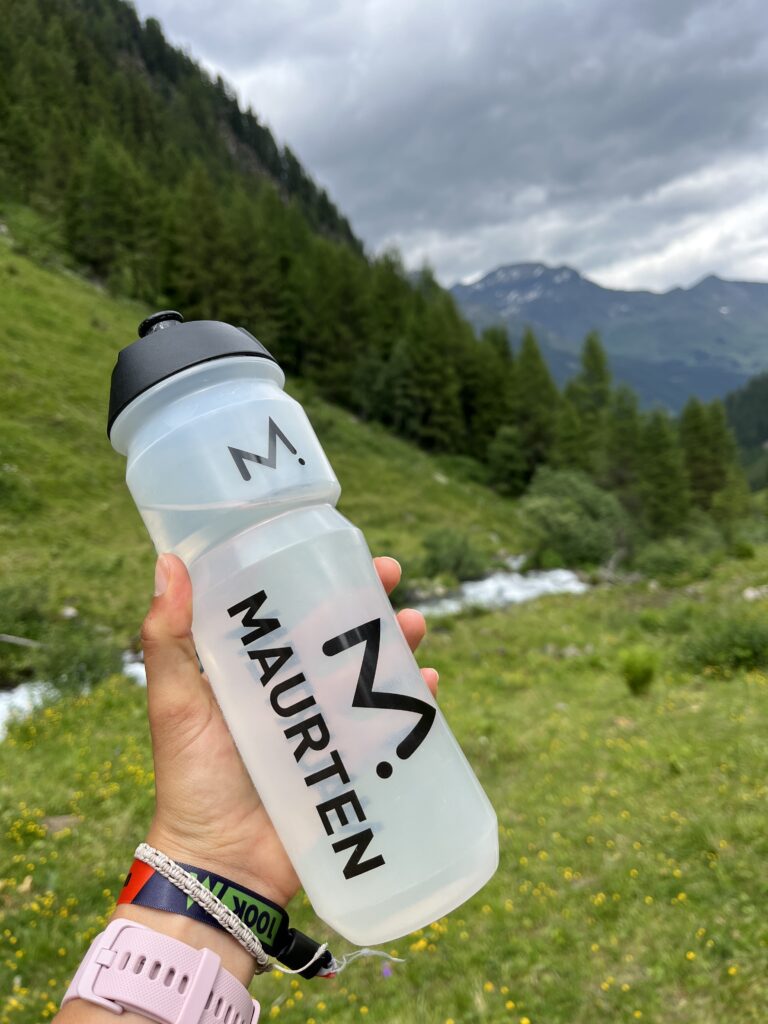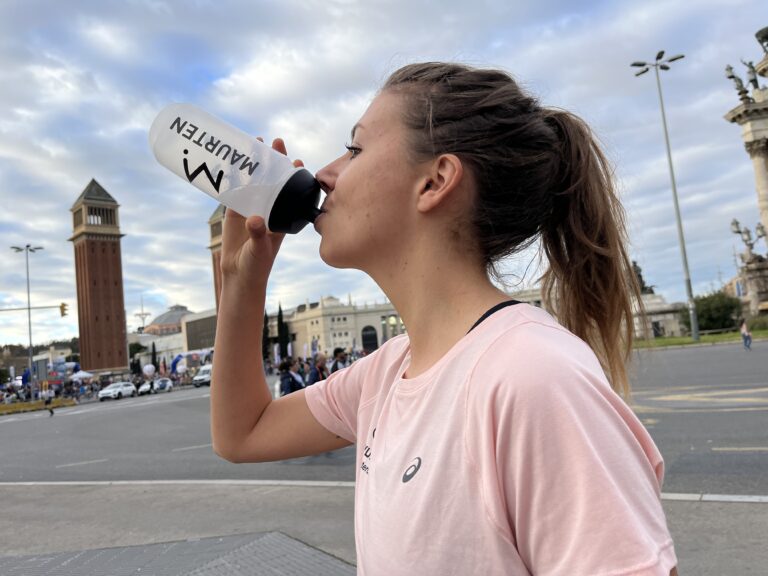Eat pasta, run fasta
As runners, we’re often told that nutrition plays a crucial role in our performance. And one aspect of nutrition that frequently comes up, especially in the days leading up to a race, is carb loading. But what exactly is carb loading, and why is it important for runners? Allow me, Lisa a professional running coach with years of experience helping athletes reach their peak performance levels, to explain it to you in this blog post.
The Principles
Carbohydrates are one of the three macronutrients, along with protein and fat, and they serve as our body’s primary source of energy. During prolonged exercise, such as running, our muscles rely heavily on glycogen—a form of stored carbohydrates—for fuel.Carb loading, simply put, is the practice of increasing your carbohydrate intake in the days leading up to a race or a long run. The aim is to maximize these glycogen stores in our muscles, providing us with a readily available source of energy to sustain our performance during the race.
Now, you might be wondering, “Why go through all the trouble of carb loading? Can’t I just eat normally?” While it’s true that our bodies are adept at utilizing various fuel sources, studies have shown that carb loading can significantly enhance endurance performance. By ensuring our glycogen stores are topped up, we can delay the onset of fatigue, maintain a steady pace, and ultimately, perform better on race day.

Myths & Facts
❌ Myth: Carb loading means eating as much pasta and bread as possible.
✅ Fact: While pasta and bread are indeed sources of carbohydrates, carb loading is about more than just loading up on these foods indiscriminately. It’s about strategically increasing your carbohydrate intake while maintaining a balanced diet overall.
❌ Myth: Carb loading is only necessary for elite athletes.
✅Fact: Carb loading can benefit runners of all levels, from beginners to seasoned veterans. Regardless of your experience level, maximizing your glycogen stores can help you perform better and feel stronger during your runs.
Timing of Carloading
Timing is key when it comes to carb loading. As a beginner runner, you’ll want to start carb loading several days before your race (side note: the amount of days of your carbloading depends heavily on the distance you are going to race) to give your body ample time to store up glycogen. Aim to begin your carb-loading phase around 2 to 3 days before race day, gradually increasing your carbohydrate intake during this time. This approach allows you to top up your glycogen stores without feeling overly bloated or sluggish on race day.
An effective running hack to make the most out of your carb loading is to decrease your intake of carbs the days previous to your increase so your body will be more receptive to the carbs you are consuming during carbloading.

Types of Carbohydrates
Now that we’ve established the importance of carb loading and its timing, let’s delve into the different types of carbohydrates and how they can fuel your runs effectively.
Complex vs. Simple Carbs: Understanding the Difference
Carbohydrates come in two main forms: complex and simple. Complex carbohydrates consist of long chains of sugar molecules and take longer to digest, providing a steady and sustained release of energy. Examples include whole grains, starchy vegetables, and legumes.
On the other hand, simple carbohydrates are made up of shorter chains of sugar molecules and are quickly digested, resulting in a rapid spike in blood sugar levels followed by a crash. Foods high in simple carbs include sugary snacks, sweets, and processed foods.
For runners, complex carbohydrates are the preferred choice during their daily diet as they provide a more stable source of energy, helping to sustain performance over longer distances. By incorporating complex carbs into your diet, you can avoid energy crashes and maintain a steady pace throughout your run. However, during training sessions it is advised to focus more on simple carbohydrates (gels, energy bars, dried fruits, …) to get that fast energy when needed.

Hydration is Key Too
In addition to carbohydrates, hydration plays a crucial role in carb loading and maintaining performance during runs. When you increase your carbohydrate intake, your body retains more water to store glycogen, leading to temporary water weight gain. As such, it’s essential to stay hydrated throughout the carb-loading process to ensure optimal performance.
Make sure to drink plenty of water leading up to your race, especially during the carb-loading phase. Additionally, consider incorporating electrolyte-rich fluids such as sports drinks or coconut water to replenish electrolytes lost through sweat and maintain hydration levels.
By prioritizing hydration alongside your carb-loading efforts, you can maximize your performance potential and feel your best on race day.
Carbloading & Raceweek
As race day approaches, proper nutrition becomes increasingly important for ensuring optimal performance on the big day. Here are some key tips to ensure a smooth pre-race week for optimal success:
Gradual Increase: One key aspect of carb loading is gradually increasing your carbohydrate intake in the days leading up to the race. This gradual increase allows your body to adapt and store glycogen efficiently, without feeling overly bloated or uncomfortable.
Meal Planning: To streamline your carb-loading efforts, consider planning your meals for each day of the pre-race week. Here are some sample meal ideas to get you started:
- Breakfast: Oatmeal topped with berries and nuts, toast with avocado or cottage cheese (BEFORE your race top with honey or jam -> fast carbs)
- Lunch: Pasta with a source of protein
- Dinner: Rice/ potato with a source of protein
- Snacks: Greek yogurt with granola, carrot sticks with hummus, banana with peanut butter
Last-Minute Fueling: On the morning of the race, it’s essential to top up your glycogen stores with a light, easily digestible meal. Aim for a combination of carbohydrates and a small amount of protein to provide sustained energy throughout the race. Add a glass of fruit juice for the extra hydration and carbs.
Avoiding Overeating: While it’s crucial to fuel your body adequately on race day, it’s equally important to avoid overeating, which can lead to discomfort and digestive issues during the race. Stick to familiar foods that you’ve eaten before long training runs, and avoid trying anything new on race day. Additionally, be mindful of portion sizes and aim to finish your meal at least 2-3 hours before the start of the race to allow for proper digestion.
- Trail and Error: Every body functions differently so what might work for your partner/ friend, might not work for you. Test sufficiently during training periods to ensure that you know what works best for you.

Post Race
After pushing your body to its limits during a race, your glycogen stores are likely depleted, and your muscles may be feeling fatigued. To kickstart the recovery process, it’s crucial to refuel with carbohydrates, which serve as your body’s primary source of energy. By replenishing your glycogen stores, you can accelerate muscle recovery, reduce soreness, and prepare your body for future training sessions.
Focus on consuming a carbohydrate-rich meal or snack within 30 minutes to an hour after finishing the race. Opt for easily digestible sources of carbohydrates, such as fruit, whole grain bread, or sports drinks, to kickstart the refueling process and jumpstart recovery. Add in some protein too to give your body the building blocks it needs to build up your muscles again.
In addition to replenishing your glycogen stores, it’s essential to prioritize hydration after the race. Running depletes your body of fluids and electrolytes through sweat, and proper hydration is crucial for maintaining optimal performance and supporting the recovery process.
Make sure to drink plenty of water in the hours following the race to rehydrate your body and replace lost fluids. Consider incorporating electrolyte-rich beverages such as sports drinks or coconut water to replenish electrolytes lost during exercise. Pay attention to your body’s thirst cues (and monitor the colour of your pee) and aim to drink enough fluids to quench your thirst and restore hydration levels.
🌯 it all up
Carb loading isn’t just about eating copious amounts of pasta and bread; it’s a strategic approach to fueling your body for endurance events, whether you’re tackling a 5K or a marathon. By gradually increasing your carbohydrate intake in the days leading up to the race, choosing high-quality complex carbohydrates, and staying hydrated, you can optimize your glycogen stores and enhance your endurance capabilities.
Remember, carb loading is not a one-size-fits-all approach. It’s essential to experiment with different strategies and find what works best for your body and your individual needs. Listen to your body, trust in your training, and above all, enjoy the journey.
I hope this blog post has helped bring some more clarity to you and I can’t wait to see you crush your goals ⚡️
PS: feel free to tag @listacoaching with your results if this information has helped you.
